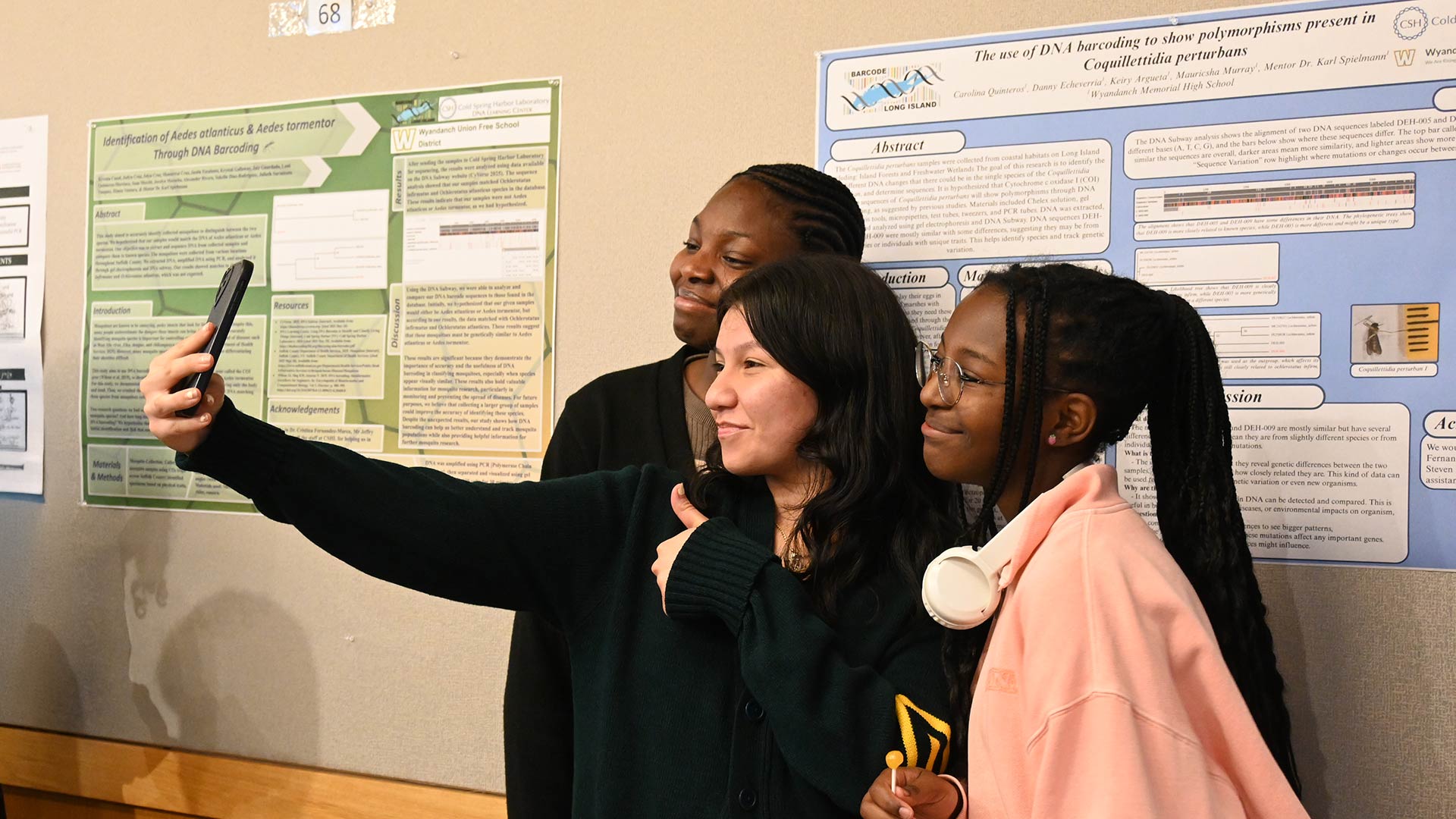Cold Spring Harbor Laboratory (CSHL) recently welcomed more than 225 high school students to the annual Barcode Long Island (BLI) Student Symposium. The students came from 21 high schools across the Island for the culmination of a program offered through CSHL’s DNA Learning Center (DNALC).
Upon their arrival, the students quickly settled into Grace Auditorium, a place where thousands of visiting scientists from around the globe go each year to present their latest research to an audience of their peers. There, the high schoolers were treated to a talk from Kasia Dinkeloo, an assistant professor with the University of Texas at Austin, who spoke about insect guts as incubators for plastic-degrading bacteria. If that sounds like an oddly specific place to start, it was somewhat familiar territory for these students. Through the BLI project, they’d been exploring Long Island’s biodiversity using genetics research techniques, including DNA sequencing, barcoding, and metabarcoding.
Next, it was the high schoolers’ turn to present their original research. Poster sessions held a short walk from Grace showcased student findings on topics like exotic and invasive species, the effect of pollution on their ecosystem, and the diseases they may carry. The posters reflected months of lab work, data analysis, and dedication.
“By using DNA barcoding, these students help identify different species in their communities and contribute to a growing database that scientists use around the world,” said DNALC External Collaborations Manager Cristina Fernandez Marco, a BLI program manager who helped organize the Symposium. “Through the program, students get hands-on lab experience, learn how to analyze data, and even get the chance to present their work at a science symposium. It’s a great way to explore science, connect with researchers, and make a real impact on environmental conservation.”
Student participant Jay Patel, a rising sophomore at Jericho High School, echoed Fernandez Marco’s enthusiasm, “I really enjoyed having complete freedom over what my research topic is, and I think that compared to regular school projects, something like this is a lot more interactive and fun to actually do,” he said.
The Symposium concluded with a ceremony celebrating the talent, curiosity, and tenacity of Long Island’s next generation. For some participants, it wasn’t just the culmination of a research project, but the beginning of a lifelong journey in science.
Written by: Caroline Cosgrove, Marketing Manager | cosgrov@cshl.edu | 516-367-8844
